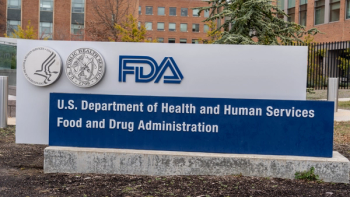
What “Precision Medicine” Means for Rare Diseases
President Obama’s year-old, $200 million Precision Medicine initiative (PMI) seems to be doing exactly what was intended, writes Heather Gartman.
It’s easy to feel cynical about big, blue-ribbon health initiatives that originate in Washington D.C. But President Obama’s year-old, $200 million
Nowhere in the medical firmament does this idea matter more than in rare diseases, which afflict as many as 350 million people around the world. Some 80% of an estimated 7,000 rare diseases involve a genetic component, and only a tiny percentage of these are treated effectively with current drugs available. If the PMI really begins to yield results as intended, some of the biggest beneficiaries could be children with rare conditions. About 35% of deaths in the first year of life are caused by rare disease.
Last week, the president held a PMI summit at the White House that tied together some tantalizing ideas. Among other things, it placed attention on the need for public and private organizations to share ideas, inspiration and patient-related data, according to first-hand accounts by rare-disease advocates like Kathy Giusti, founder of the Multiple Myeloma Foundation. “The PMI has very wisely tapped business, academia and technology’s best-in-class,” Giusti wrote in
Examples are in the
The fact sheet also lists partnerships involving Amazon, IBM and a host of smaller Big Data companies. Other collaborations bring together pharma companies like Roche and Pfizer, the Bill & Melinda Gates Foundation, the Broad Institute, Harvard Medical School and many national and regional health plans. It’s a very impressive who’s who list for science, medicine, technology and innovation.
The Big Data problems these partnerships plan to tackle are the gorillas of the field, many of them involving gene sequencing programs of massive scale. What does that look like? Sequencing the genomes of 1.65 million cancer patients in the U.S. would produce a body of data 4,000 times greater than all the contents of the Library of Congress, according to Eric Dishman, general manager of health and life sciences at Intel, who was quoted in Fast Company’s
One problem, as Fast Company points out, is that much of that medical data is locked up in vaults of one sort or another. Only 4% of data on cancer patients is open and available to researchers, Dishman explains.
Gaining access to data may prove even more difficult than crunching it, once it’s available. This brings to mind an issue my colleagues at inVentiv Health PR and I covered in a recent whitepaper titled “
That data often resides in “registries,” which are developed and maintained by patient organizations in partnership with pharmaceutical firms. Patients hope these troves of information will speed the development of desperately needed drugs – and in many cases, it does exactly that. But, like much of the information that is generated in clinical trials, data in patient registries is rarely open or accessible to researchers at other companies, or in academia, or in government laboratories.
Many advocates believe that patients should have some ownership and control over highly personal medical data that is commercially useful, and which may hold the keys to curing illnesses. That’s especially true for rare pediatric diseases, where time is of the essence. Nearly one-third of children with rare diseases will not live to see their fifth birthday.
Considered against statistics like that, it’s clear the Precision Medicine Initiative should be a national priority. It is exciting to see the program producing milestones after just one year in existence. Now that some of the key partnerships are in place, it will be fascinating to learn how much information can actually be shared, and where the obstacles lie. At the end of the day, when new treatments are discovered for rare diseases based on large data sets that all researchers can tap, the greatest beneficiaries will be the patients and their loved ones. Now that will be real progress.
Heather Gartman is Regional Managing Director (DC),
Newsletter
Lead with insight with the Pharmaceutical Executive newsletter, featuring strategic analysis, leadership trends, and market intelligence for biopharma decision-makers.




